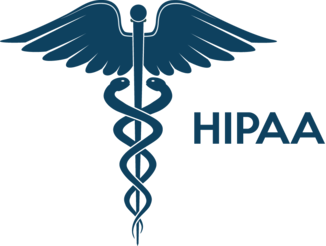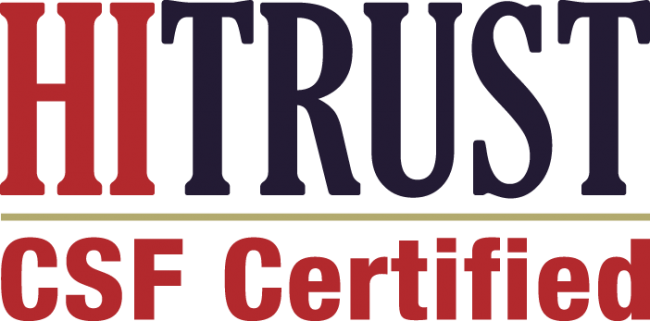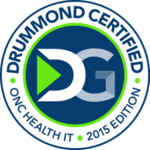Chronic pain affects millions of Americans, fundamentally altering their quality of life and imposing significant healthcare burdens. The landscape of pain management has evolved dramatically, particularly with Medicare’s introduction of comprehensive Chronic Pain Management (CPM) services in 2023. This shift represents a paradigmatic change from traditional reactive treatment models to proactive, holistic care approaches that address the multifaceted nature of chronic pain.
Understanding the Scope of Chronic Pain
The statistics surrounding chronic pain in America are staggering. Among Medicare beneficiaries living in the community in 2022, 36% experienced chronic pain, with the majority experiencing pain in multiple locations. Approximately 91% of Medicare beneficiaries living with chronic pain experienced chronic pain in more than one location, highlighting the complex, multisystem nature of chronic pain conditions.
Among Medicare beneficiaries living with chronic pain, the most common sources of pain included hips, knees, or feet (87%), back (86%), and hands, arms, or shoulders (76%). These figures underscore the prevalence and widespread impact of chronic pain among the Medicare population, necessitating comprehensive treatment approaches.
On a national scale, in 2023, 24.3% of adults had chronic pain, demonstrating that this isn’t merely a Medicare-specific issue but a broader public health challenge affecting millions of Americans across all demographics.
Traditional Pain Management: The Old Paradigm
Traditional pain management has historically operated under a reactive, symptom-focused model. This conventional approach typically encompasses several key characteristics that, while providing some relief, often fall short of addressing the comprehensive needs of chronic pain patients.
Episodic Care Model
Traditional pain treatment has primarily followed an episodic care model, where patients seek treatment only when pain becomes unbearable or significantly interferes with daily activities. This reactive approach often results in:
- Emergency room visits during pain crises
- Fragmented care across multiple providers
- Limited continuity in treatment plans
- Missed opportunities for preventive interventions
Medication-Centric Focus
Conventional pain management has heavily relied on pharmaceutical interventions, particularly:
- Over-the-counter pain relievers for mild to moderate pain
- Prescription opioids for severe chronic pain
- Anti-inflammatory medications
- Muscle relaxants and nerve pain medications
While medications can provide essential relief, this singular focus often overlooks the multidimensional aspects of chronic pain, including psychological, social, and functional components.
Compartmentalized Specialty Care
Traditional models often compartmentalize pain treatment across various specialties without adequate coordination:
- Orthopedic surgeons for musculoskeletal pain
- Neurologists for nerve-related pain
- Rheumatologists for inflammatory conditions
- Pain management specialists for interventional procedures
This fragmented approach can result in duplicated services, conflicting treatment recommendations, and gaps in comprehensive care.
Limited Preventive Strategies
Conventional pain management has historically placed minimal emphasis on preventive strategies, focusing instead on treating pain after it has already significantly impacted a patient’s life. This reactive stance often means missed opportunities to:
- Identify and address pain triggers early
- Implement lifestyle modifications that could prevent pain exacerbation
- Provide education on pain self-management techniques
- Address underlying psychosocial factors contributing to pain perception
Medicare’s Comprehensive CPM Approach: A Revolutionary Shift
The Centers for Medicare and Medicaid Services (CMS) has finalized coverage and payment of new Chronic Pain Management (CPM) bundled payment codes, effective January 1, 2023. This groundbreaking initiative represents a fundamental shift toward comprehensive, coordinated chronic pain care.
Coverage of these services reflects CMS’s interest in improving the care experience for individuals with chronic pain and more appropriately reflecting the time and resources involved in furnishing comprehensive CPM services.
Holistic Assessment and Treatment Planning
Medicare’s CPM approach begins with comprehensive assessments that evaluate:
- Physical pain symptoms and functional limitations
- Psychological and emotional impact of chronic pain
- Social determinants affecting pain management
- Current medication regimens and their effectiveness
- Patient goals and preferences for treatment
This holistic assessment forms the foundation for individualized treatment plans that address the patient as a whole person, not just their pain symptoms.
Coordinated Multidisciplinary Care
The new CPM model emphasizes coordinated care among multiple healthcare professionals, including:
- Primary care physicians as care coordinators
- Pain management specialists
- Physical therapists and occupational therapists
- Behavioral health professionals
- Pharmacists for medication optimization
- Social workers for psychosocial support
This team-based approach ensures that all aspects of a patient’s chronic pain are addressed through coordinated interventions.
Bundled Payment Structure
Medicare’s CPM services utilize a bundled payment structure that incentivizes comprehensive care rather than volume-based services. This payment model:
- Covers multiple services under a single code
- Encourages providers to focus on outcomes rather than quantity of visits
- Supports longer appointment times for thorough assessments
- Facilitates care coordination among team members
Evidence-Based Interventions
The CPM approach emphasizes evidence-based interventions that have demonstrated effectiveness in chronic pain management:
- Cognitive-behavioral therapy for pain management
- Physical therapy and movement-based interventions
- Mindfulness and stress reduction techniques
- Non-pharmacological pain management strategies
- Appropriate medication optimization and monitoring
Key Differences: Traditional vs. CPM Approach
Treatment Philosophy
Traditional Approach: Reactive, symptom-focused treatment aimed at immediate pain relief.
CPM Approach: Proactive, person-centered care focused on improving overall function and quality of life while managing pain.
Care Coordination
Traditional Approach: Fragmented care across multiple providers with limited communication and coordination.
CPM Approach: Integrated, team-based care with systematic coordination among all healthcare providers involved in the patient’s care.
Payment Structure
Traditional Approach: Fee-for-service model that incentivizes volume of services rather than outcomes.
CPM Approach: Bundled payment structure that rewards comprehensive care and positive patient outcomes.
Patient Engagement
Traditional Approach: Limited patient education and self-management support, with patients often passive recipients of treatment.
CPM Approach: Active patient engagement through education, self-management training, and shared decision-making in treatment planning.
Treatment Duration and Frequency
Traditional Approach: Brief appointments focused on immediate pain relief with sporadic follow-up.
CPM Approach: Longer, more comprehensive appointments with systematic follow-up and ongoing monitoring of treatment effectiveness.
The Impact of Comprehensive Pain Management
The shift toward comprehensive pain management represents more than just a change in treatment approach; it reflects a fundamental understanding that chronic pain is a complex, multifaceted condition requiring nuanced, coordinated interventions.
Improved Patient Outcomes
Early indicators suggest that comprehensive pain management approaches can lead to:
- Better functional outcomes and quality of life
- Reduced healthcare utilization for emergency pain management
- Improved patient satisfaction with care
- More sustainable long-term pain management strategies
Healthcare System Benefits
The CPM approach also offers significant benefits to the broader healthcare system:
- Reduced costs through more efficient, coordinated care
- Decreased emergency department visits for pain-related issues
- Better resource utilization across the healthcare system
- Improved provider satisfaction through more effective treatment models
Technology Integration in Modern Pain Management
As healthcare continues to evolve, technology plays an increasingly crucial role in supporting comprehensive pain management. Digital health solutions are becoming essential tools for implementing and sustaining the coordinated care model that Medicare’s CPM approach envisions.
Modern pain management platforms, such as the HealthViewX Chronic Pain Management application, are designed to support the comprehensive, coordinated approach that Medicare’s CPM model promotes. These technological solutions facilitate better care coordination, patient engagement, and outcome tracking that are essential components of effective chronic pain management in the digital age.
Looking Forward: The Future of Pain Management
U.S. Pain Foundation believes this is an important, positive step forward for millions of Americans living with chronic pain. The organization notes that Americans over the age of 65 and those younger than 65 who are disabled and receive health coverage through Medicare would be eligible for this benefit starting January 1, 2023.
Importantly, private health insurers tend to follow CMS’s lead, so we would expect that private insurers would begin to provide similar benefits. This suggests that the comprehensive approach pioneered by Medicare may eventually become the standard of care across all insurance types.
The chronic pain management market reflects this growing recognition of the need for comprehensive approaches. According to Coherent Market Insights, the global chronic pain market size is estimated to be valued at USD 72.10 billion in 2024 and is expected to surpass USD 115.51 billion by 2031, growing at a CAGR of 7% from 2024 to 2031.
The chronic pain market is driven by the rising prevalence of chronic illnesses such as arthritis, fibromyalgia, and diabetes. Rapid adoption of new pain medications also contributes to market growth.
Challenges and Considerations
While Medicare’s CPM approach represents significant progress, several challenges remain:
Provider Training and Education
Healthcare providers need comprehensive training on the new CPM model, including:
- Understanding bundled payment structures
- Developing skills in coordinated care delivery
- Learning evidence-based pain management interventions
- Adapting to team-based care models
Implementation Across Diverse Settings
Successfully implementing CPM services requires adaptation across various healthcare settings:
- Rural areas with limited specialist availability
- Urban areas with complex healthcare systems
- Different practice sizes and organizational structures
- Varying levels of technological infrastructure
Patient Education and Engagement
Patients also need education about the new approach:
- Understanding the comprehensive nature of CPM services
- Learning to engage actively in their pain management
- Developing realistic expectations about outcomes
- Adapting to team-based care models
Conclusion
The transition from traditional pain management to Medicare’s comprehensive CPM approach represents a watershed moment in chronic pain care. This shift acknowledges that chronic pain is not merely a symptom to be masked but a complex condition requiring sophisticated, coordinated interventions that address the whole person.
The evidence is clear: among Medicare beneficiaries living in the community in 2022, 36% experienced chronic pain, with the vast majority experiencing pain in multiple locations. This substantial population requires more than the fragmented, reactive care that traditional models have provided.
Medicare’s CPM approach offers a path forward that prioritizes patient-centered care, evidence-based interventions, and coordinated team-based treatment. Coverage of these services reflects CMS’s interest in improving the care experience for individuals with chronic pain and more appropriately reflecting the time and resources involved in furnishing comprehensive CPM services.
As we move forward, the success of this comprehensive approach will depend on continued collaboration among healthcare providers, patients, policymakers, and technology partners. The integration of digital health solutions, supportive care coordination platforms, and evidence-based treatment protocols will be essential for realizing the full potential of comprehensive chronic pain management.
The future of pain management lies not in treating pain as an isolated symptom but in understanding and addressing it as part of a complex, interconnected system of physical, psychological, and social factors. Medicare’s CPM approach provides the framework for this transformation, offering hope for the millions of Americans living with chronic pain and pointing toward a more effective, compassionate approach to pain management that truly serves the whole person.
This comprehensive approach represents more than just a policy change; it embodies a fundamental shift in how we understand and treat chronic pain, moving from a model of symptom suppression to one of holistic healing and improved quality of life. As implementation continues and refinements are made, Medicare’s CPM approach has the potential to transform not only how we treat chronic pain but also how we approach complex, chronic conditions across the entire healthcare system.






